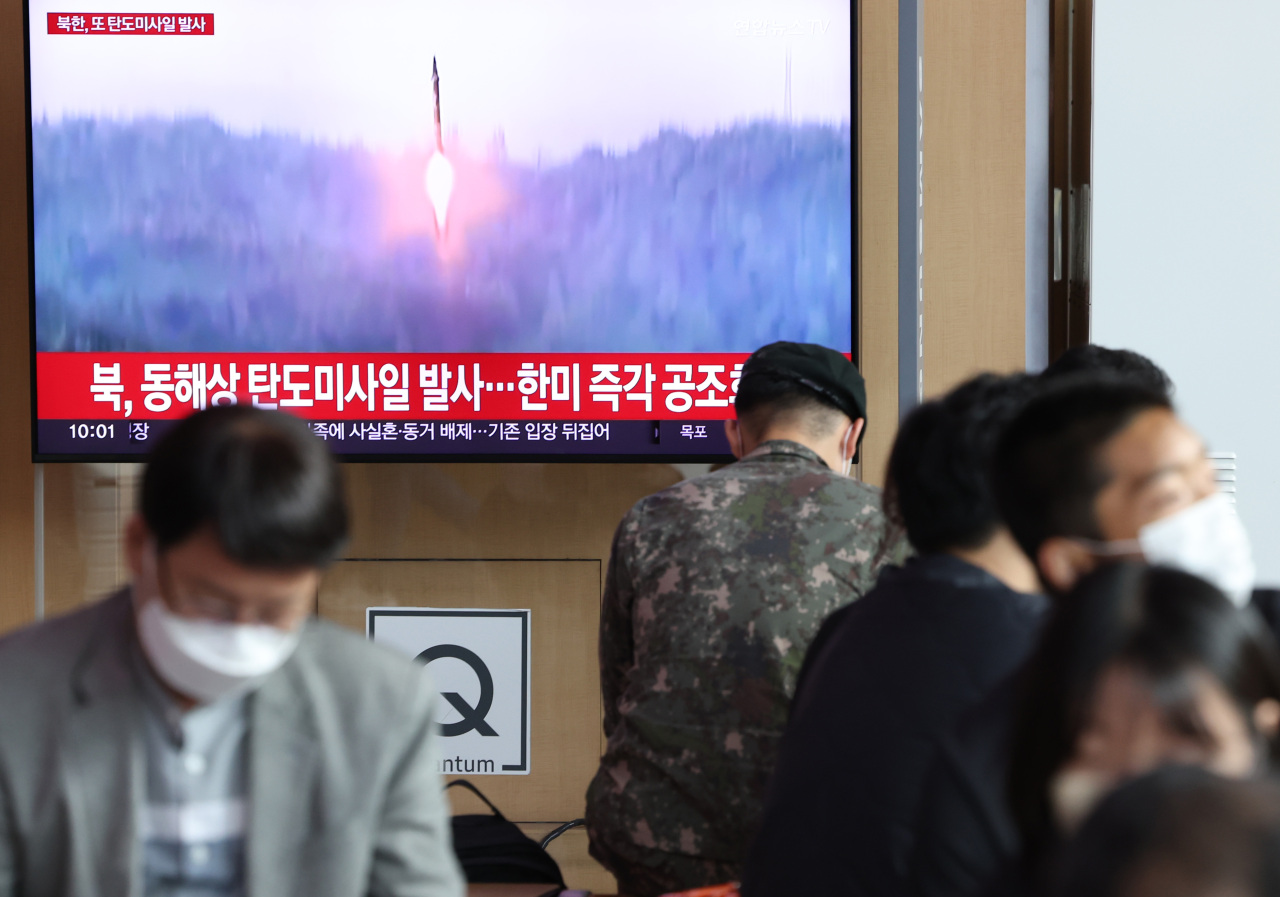
Pyongyang’s consecutive missile launches came just one day before US Vice President Kamala Harris is set to visit South Korea. The ballistic missile-firing was the second in three days as Seoul and Washington engage in large-scale naval drills.
South Korea’s Joint Chiefs of Staff said “two short-range ballistic missiles were being fired from the Sunan area in Pyongyang city toward the East Sea from around 06:10 p.m. to 06:20 p.m.”
The short-range ballistic missiles traveled about 360 kilometers at a speed of Mach 6 and at an altitude of 30 km, the JCS said in a statement, adding that the South Korean and US intelligence authorities are analyzing the specifications.
The missiles were reportedly fired from a transporter erector launcher, or TEL, and targeted a specific region in the East Sea. The target is believed to be located in Al Island, an uninhabited island off the North’s east coast.
The JCS said its chief, Gen. Kim Seung-kyum, and Gen. Paul LaCamera, the chief of the United Nations Command and United States Forces Korea, held a meeting and shared their assessment of the situation.
Both sides also reaffirmed to “further reinforce the combined defense posture against any kind of North Korean threats and provocations.”
“Our military will maintain a firm readiness posture based on its ability to overwhelmingly respond to any North Korean provocations,” the JCS said, adding the military will “track and monitor related moves in preparation for further provocations by North Korea in close coordination with the US.”
The JCS underscored that “such provocations by North Korea will further strengthen the alliance’s deterrence and response capabilities of the South Korea-US alliance and will only deepen its isolation from the international community.”
National Security Adviser Kim Sung-han convened an emergency meeting of the National Security Council standing committee to discuss countermeasures to North Korea’s missile launches, the South Korean presidential office said. President Yoon Suk-yeol was immediately briefed on the launches.
The NSC strongly condemned Pyongyang's ballistic missile launches as a provocation that violates the UN Security Council resolutions.
The NSC said it will keep a close tab on related movements given that North Korea conducted a series of missile launches at a crucial juncture.
Tit-for-tat against alliance
The missile launches, an apparent tit-for-tat action against the alliance’s move, came at a sensitive time.
Harris plans to travel to Seoul on Thursday and visit the heavily fortified Demilitarized Zone that separates the two Koreas.
During a closed-door briefing with reporters, a senior official of the Biden administration on Tuesday said the key message of Harris’ visit to the DMZ is to show that the US defense commitments to South Korea are “ironclad.”
“We know there’s been a lot of discussions with the Koreans about extended deterrence commitments,” the official said, requesting anonymity. “And to really put those words into action, we believe it’s a powerful signal of that.”
In addition, the South Korean and US navies have been staging their four-day bilateral maritime exercises in South Korea’s East Sea since Monday.
The US Navy’s nuclear-powered aircraft carrier, USS Ronald Reagan, and its carrier strike group, as well as the US nuclear-powered fast attack submarine USS Annapolis, have joined the naval drills.
Yang Moo-jin, a professor at the University of North Korea Studies, called North Korea’s spate of ballistic missile launches this week a “backlash against the bilateral naval drills between South Korea and the US.”
North Korea also intends to test the alliance’s response to its missile launches and maintain the current cycle of tensions until it conducts a seventh nuclear test.
Wednesday’s missile launches were also conducted just three days after North Korea fired one short-range ballistic missile from Taechon County in North Pyongan Province into the East Sea on Sunday morning.
South Korea’s JCS said the missile traveled about 600 kilometers at a speed of Mach 5 and at an altitude of 60 km. Analysts have taken note of the missile’s travel distance, pointing out that Taechon County and Busan, where the USS Ronald Reagan made its port of call, are around 600 kilometers apart.
North Korea has launched a total of 34 ballistic missiles so far this year.





